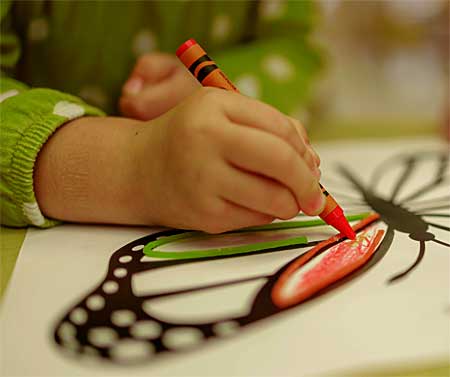Starting with the ecological importance of the butterflies to the sociocultural significance that teachers can use for educational purposes, one can implement various caterpillar and butterfly activities in most school subjects.
Always start with the age category analysis and focus on more than one subject since you can combine physics and biology to explain the butterfly’s transformation process or migration.

The most important is to go beyond the basic information and let your students become inspired as they engage in environmental campaigns and explore the population and the species of the butterflies in your local area.
Buy on Amazon: How to Raise Monarch Butterflies, A Step-by-Step Guide for Kids by Carol Pasternak
7 Caterpillar and Butterfly Activities for Students
1. Environmental Migration Tracking
One of the most inspiring activities students of all ages will enjoy is tracking the butterfly migration. You can track butterflies online and offline as you learn how the butterflies keep their tracks. You can start with a map first and tell the youngsters about the role of the migration and how one can track and evaluate the butterflies like the royal monarchs. The students will be able to take notes on their own and see how they can change to become eco-friendly and thoughtful.
2. Planting Milkweed
If you want to do something simple yet meaningful and with a long-term effect, teach your students how they can plant milkweed in the schoolyard or create a safe space for butterflies in their home garden. Planting milkweed is one of those activities that will help your students to spend time outside and cooperate fruitfully as they work on the crops and maintain the activity together. Make sure to plant milkweed in areas with sufficient sunlight and soil recommendations for each plant type. While you are at it, create flowerbeds to inspire young learners.
3. Creating Butterfly-Based Objects Together
If you want to get even more creative, consider exploring symbolism in butterfly jewelry as you create unique necklaces or caterpillar objects. It will help your students to explore the culture of Native Americans or see how students express spiritual growth in what they do with their hands. You can start with Ancient Rome to learn more about the history or turn to Ancient Egypt to explain the symbolism of the ancient beliefs. It will help to address the school subjects and inspire your students to read more.
4. Exploring Butterfly Symbolism via Drawing
The youngest students can start by exploring butterfly symbolism in the drawings and look into the transformation process. Beginning with the caterpillar and the little stories about how it explores the world, your students can talk about their dreams, hopes, and fears.
Such activity will have a tremendous therapeutic effect that can help determine the mental problems of the students. Special education teachers often use this butterfly practice in their classes. As you proceed to the butterfly effect and the spiritual growth, you can let the students express themselves in poems and pictures or improve motor functions as they work with their hands and enable relevant cognitive skills.
5. Starting a Butterfly Blog Online
Another enjoyable educational activity is starting a personal blog that explores the importance of caterpillar and butterfly cycles and environmental protection or writing creative stories. The older learners can create social campaigns and discuss their ideas to address the challenges.
This will help students to boost writing skills that will be important for their education. If they need to learn how to compose an impressive assignment, you can advise them to check free samples at the Writing Universe website, where they have many essay examples. Once you create a writing space and work on one’s style, it will help the students to address formatting and writing style while improving their creative skills.
6. Chemistry-Based Garden Experiments
The chances are that your students will ask you about the dangers of pesticides and question how they affect butterflies. While you may not use any dangerous chemicals to explain the cause-and-effect to the learners in practice, it is possible to implement similar experiments that show how the chemical elements destroy the natural habitat of the butterflies. You can turn to YouTube and multimedia presentations by checking the templates at Quizlet or create your own based on the age of the students and the primary subject you would like to explore.
7. Exploring The Butterfly Culture
Most students these days will rarely go beyond the lifecycle of a butterfly as they explore caterpillars and watch short videos for their biology class. Still, there is way more to explore and learn about butterflies when you take a closer look at the butterfly symbolism and the cultural role that it plays in different countries. Try the practices we outlined and create a fun and informative lesson for students to enjoy.
Author: Christian Duke has been an avid butterfly aficionado since he was a child. As a writer and educator, Christian believes that by turning to butterflies, one can learn a lot. Follow Christian to discover new ideas and apply them in practice.






